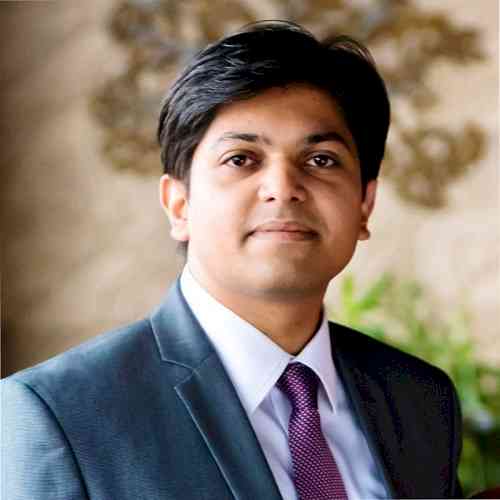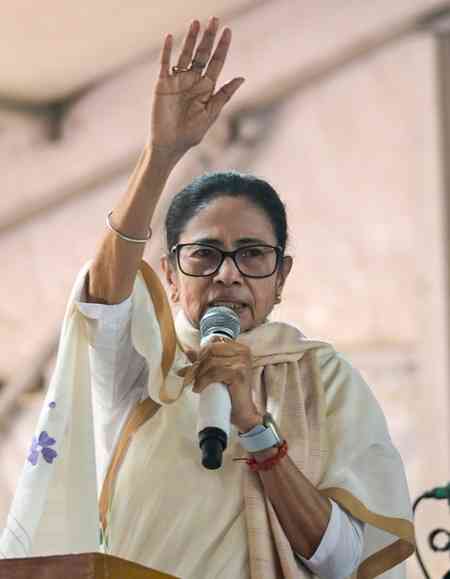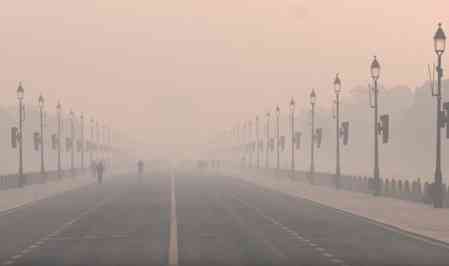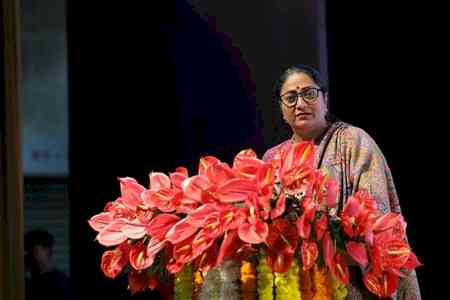The Third Eye: India’s handling of Indo-US relations
With the US emerging as the sole superpower on the termination of the Cold War in 1991-consequent on the dismemberment of USSR, India was required to reset its geopolitical strategy keeping in view the three paradigm shifts that had occurred in the world scene.
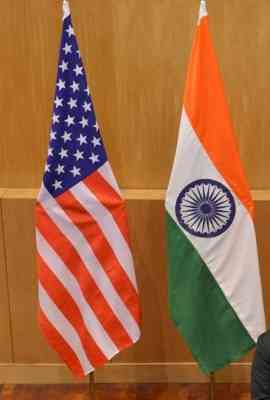
D.C. Pathak
New Delhi, Aug 10 (IANS) With the US emerging as the sole superpower on the termination of the Cold War in 1991-consequent on the dismemberment of USSR, India was required to reset its geopolitical strategy keeping in view the three paradigm shifts that had occurred in the world scene.
First, the US was driving the global trends in a unipolar order but for India, a rising power itself, Indo-US relations reflected a natural friendship between the two largest and well-tested democracies in a world that faced dictatorial regimes like China’s.
Secondly, it was reasonable for India to work on the presumption that in the post-Cold War era the world would move towards multi-polarity because the nations did not have to be under the spell any more, of the militarily tense ideological divide between Communism with State controls and Capitalism backed by Free Market. The Non Aligned Movement that India led was therefore reshaped into a strategy of developing bilateral relationships with all countries-big or small- on the basis of mutually beneficial security and economic interests.
Finally, India found itself moving towards a leadership role in the South that basically wanted peace for economic growth. Strategic analysts have to rise above the details of policies a transient America under Donald Trump was pursuing or the direction European Union was consequently adopting in the present and see what was new in the geopolitical environment that India could strategise for- without getting trapped into the legacies of the past.
India has a realistic assessment of where it stands in the scale of global economy and military power. India is aware that China was pursuing the economic route to becoming the second superpower, having drawn lessons from the demise of the Soviet Union, and that it was now the leader of the China-Russia combine. There were enough indications of a return to Cold War on the horizon between the China-led axis and the US but it is also a fact that China was still having to buy time for reaching a position where it could measure upto a situation of military confrontation with America.
For India, ‘strategic autonomy’ is not a slogan but a way of remaining non-aligned in military conflicts of global implications, such as the Ukraine-Russia ‘war’ and the Israel-Iran conflagration, with the objective of serving the cause of world peace. India’s pursuit of multi-polarity is not a strategic liability but a meaningful way of handling international relations in the present geopolitical flux.
India is sending a clear message to China from the platforms of Quad, I2U2 and G20 about where will India’s support lie in a future US-China conflict. Inspite of the erratic pronouncements of President Trump, he is consistent in denouncing Islamic Terrorism and identifying China as the main adversary of the US. Trump withdrew from the WHO on a specific grouse that the UN agency was China dominant. This provides enough common ground for building Indo-US strategic partnership notwithstanding the irritation Trump has caused to Indians by his one- sided pronouncements on trade and comments on the state of Indian economy.
What should bother India’s policy makers, however, is that President Trump was apparently not fully alive to the security threat posed by Sino-Pak strategic alliance to the world peace in general and to India in particular. Trump has tried to cultivate Pakistan, whose military leadership has been traditionally close to the Pentagon any way, for gathering support for his own personal ambition of securing the Nobel Peace Prize for resolving ‘armed conflicts’ in the world. Israel has backed the proposition, which is not a surprise.
The US President has somehow ignored the proven fact of Pakistan sheltering Islamic radical forces that always looked upon the US as their ‘first enemy’. He had also not taken enough notice of the Chinese military hardware and technological support extended to Pakistan in the recent spell of Indo-Pak war-like confrontation that followed the Pakistan-directed gruesome terrorist attack at Pahalgam. India can deal with the inconsistent and transactional responses of Trump without compromising its own national interests, in the belief that the friendship between India and US as leaders of the democratic world, would survive this Presidency.
Trump is driven by the call of ‘America First’ in his push for consolidating US economy and his interest in Pakistan was primarily for striking a favourable economic deal with that country. India has responded with reason on the issues of both illegal migration as well as trade and tariff pitched by President Trump on top of his agenda. India’s strategy has to rest on the valid presumption that US needed India as much as India would need the US. This will help this country to stand firm on points of reciprocity affecting Indo-US relations.
India can afford to have a strategy of patience and looking out -not one of alignment. Not aligning with any existing or emerging superpower is a form of power by itself. For US India may not be an ally but it is certainly an autonomous partner who had to be given due regards by Trump. This fits in better with India’s profile as a major power whose word mattered in global issues of war and peace.
Also, Trump Presidency was reconsidering the terms of its security guarantees in Europe making it clear that US might be the world’s preeminent power but it no longer ‘drove a unipolar order’. Many countries in Africa, Asia and Latin America are coming on their own and it is strategically appropriate for India to have the image of an anchor of the South in today’s geopolitics.
India has to take deep cognisance of an Indo-Pacific that was witnessing a greater contest at present, a more violent Middle East and the growing influence of China in India’s neighbourhood. On balance, India has to lean towards a democratic US against a dictatorial China that was already betraying hostility towards this country. There was no need for India to rush to the American camp, however, and the policy of remaining an independent-minded observer of the world scene, ready to join in the cause of peace and human welfare, was in line with our strategic culture. Non-alignment for India has now changed to bilateral friendships with all-this has enabled India to respond to the trouble spots of the world with a call for peace and negotiations.
To sum up, Indo-US relations have to rest on a mutual acknowledgement by the two countries of the special importance of their friendship that gave a universal message about democracy standing against dictatorships, expansionism and recourse to terrorism for achieving political aims.
India has rightly stepped up its engagement with the Quad to reaffirm the importance of ‘rules-based order in the Indo-Pacific region’. Somewhere, it checks the outreach of China to the Indian Ocean and thus strengthens India’s maritime security. The Trump Administration is committed to combating Chinese advances and looking upon Quad as a centrepiece of its policy in the Indo-Pacific. India is thus as close to the US on this matter as any ‘ally’ would be.
India has in the past also stood by the US in dealing with a common threat to their security. It may be recalled that following 9/11, India was among the first to join the US- led ‘ world coalition against global terror’ even as a reluctant Pakistan needed to be coerced by President George Bush to come on board.
The biggest threat to India’s national security is the Sino-Pak axis directing its hostility against India. The military dimension of this strategic alliance came into play in the recent Indo-Pak conflict. India has the right to critically judge President Trump’s approach to this country. If he does not see India’s case against Pakistan on Pahalgam in contrast to India’s support for America on US-China issues, India should give this matter a serious thought.
Trump seemed to be giving allowance to Pakistan- a country known for instigating Islamic terrorism-for the narrow reason of trade and this gave India the right to balance its defence deals between US and Russia and seek tariff parity with the former.
President Trump’s suggestions of ‘tariff pressure’ being applied to countries trading with Russia on the ground that they indirectly helped Russia against Ukraine, were neither here nor there and could be handled by India through a mix of strategic firmness and diplomatic finesse. India has not hesitated to call Trump’s move as unfortunate and unreasonable. President Putin needs to know that India considered its friendship with Russia as a vital part of its strategic autonomy.
Meanwhile, India has adopted the strategy of promoting self- sufficiency in defence and economy which is the right thing to do in all circumstances - more so at a time when geopolitical divides and an economic flux seemed to be overtaking the world.
(The writer is a former Director Intelligence Bureau)
--IANS
dcpathak/rs


 IANS
IANS 
